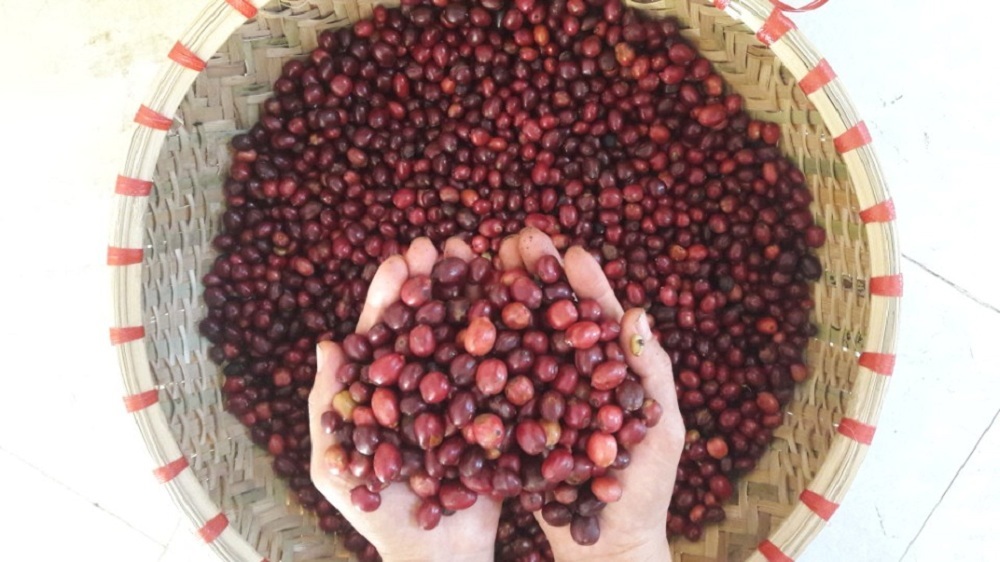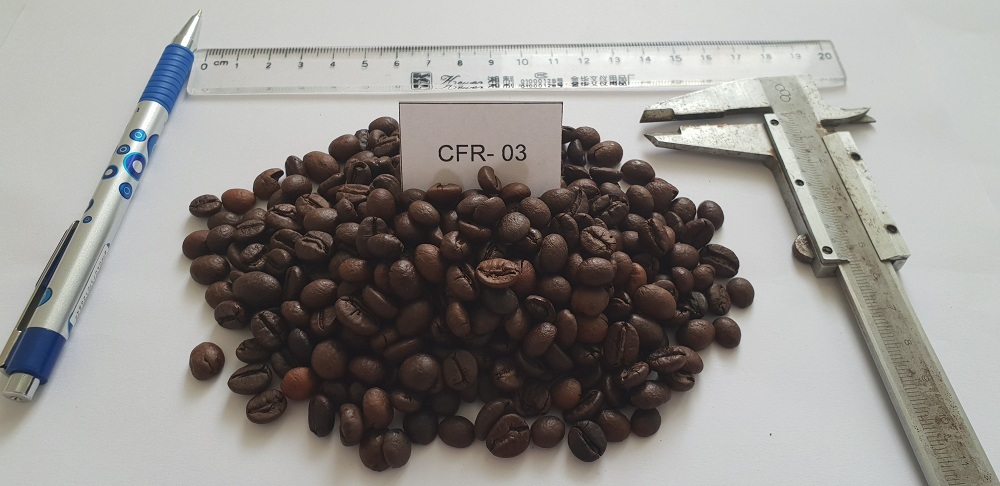On 26 December 2019, Intellectual Property Office of Viet Nam has issued Decision no. 6221/QĐ-SHTT on granting Geographical indication registration certificate no.00079 for Đăk Hà coffee. People’s Committee of Đăk Hà district is the organization in charge of managing this GI.

Đăk Hà coffee has many varieties, including coffee bean and other processed coffee products such as roasted coffee, coffee powder and coffee essence.
The coffee beans have oval shape, gray colour, characteristic aroma with no strange smell. Đăk Hà coffee bean is low on the length and width, specifically: the bean length is 8.59 mm to 9.08 mm; the width is 7.00 mm to 7.42 mm. Đăk Hà coffee bean has high caffeine, soluble carbohydrate and reducing sugar contents; the high fat content resulting in the rich taste; the high raw protein content resulting in compounds that have sweet and caramel taste; water-soluble content is high; raw fibre and ash content is low; specifically: Moisture: 8.50 % to 9.55 %; caffeine content: 1.79 % to 2.19 %; raw protein content: 15.34 % to 16.85 %; sugar content: 3.51 % to 3.77 %; soluble carbohydrate content: 9.36 % to 10.33 %; fat content: 11.98 % to 12.75 %; raw fibre content: 29.30 % to 30.48 %; ash content: 3.32 % to 4.04 %; water-soluble content: 30.36 % to 32.24 %.

Roasted coffee beans have oval shape, brown to dark brown colour, strong aroma with no strange small. The bean length is 9.23 mm to 11.63 mm; the width is 7.58 mm to 8.99 mm; Đăk Hà roasted coffee has high caffeine, soluble carbohydrate and reducing sugar contents; the high fat content resulting in the rich taste; the high raw protein content resulting in compounds that have sweet and caramel taste; water-soluble content is high; raw fibre and ash content is low; specifically: Moisture: 1.40 % to 2.58 %; caffeine content: 1.98 % to 2.40 %; raw protein content: 10.07 % to 11.64 %; sugar content: 2.93 % to 3.41 %; soluble carbohydrate content: 13.39 % to 16.63 %; fat content: 10.91 % to 11.53 %; raw fibre content: 29.50 % to 30.42 %; ash content: 3.94 % to 4.86 %; water-soluble content: 29.85 % to 36.31 %.

Coffee powder has brown-yellow colour, the coffee liquid has reddish-brown colour, strong aroma with no strange smell, the taste is slightly sour and acrid, lightly bitter and long aftertaste. Đăk Hà coffee powder has high caffeine content; high soluble carbohydrate and reducing sugar contents; the high fat content resulting in the rich taste; the high raw protein content resulting in compounds that have sweet and caramel taste; water-soluble content is high; raw fibre and ash content is low; specifically: Moisture: 1.41 % to 2.55 %; caffeine content: 2.00 % to 2.41 %; raw protein content: 10.10 % to 11.65 %; sugar content: 2.95 % to 3.43 %; soluble carbohydrate content: 13.40 % to 16.62 %; fat content: 10.93 % to 11.54 %; raw fibre content: 29.53 % to 30.13 %; ash content: 3.95 % to 4.87 %; water-soluble content: 29.86 % to 36.32 %.

Coffee essence has dark brown colour, the coffee liquid is black, the aroma is strong and sweet with no strange smell, the taste is slightly sour and acrid, lightly bitter and long aftertaste. The chemical content includes: Moisture: 0.54 % to 0.62 %; caffeine content: 3.59 % to 4.07 %; raw protein content: 27.63 % to 29.42 %; sugar content: 8.27 % to 8.96 %; soluble carbohydrate content: 24.80 % to 26.87 %; fat content: 17.96 % to 19.35 %; raw fibre content: 0.17 % to 0.24 %; ash content: 0.21 % to 0.24 %; water-soluble content: 83.80 % to 84.64 %.

The unique natural conditions of the geographical area is the deciding factor to the peculiar characteristics of Đăk Hà coffee. The area is the contact point of the hot and cold climate streams under the influence of the Ngọc Linh range. The main topography of the area is round-top and flat-top hills of 580-650 metre high intertwining with low terrace, which is the transitioning terrain between high mountains and lower areas. The geographical area has a dense system of rivers, streams and lakes, the irrigation is varied with many large dams. The underground water is at medium-low level which helps regulating the water, suitable for the irrigation of coffee. The average total rainfall of the area is relatively high, though it is low during the blooming (January and February) and berry ripening (October and November). The temperature is stable throughout the months with the average variance is under 2OC. The humidity is low with annual average is 78 - 82%. The total hours of sunlight is high, concentrating in the dry season which accounts to 70% of a year’s hour of sunlight. Moreover, the soil has suitable physical and chemical properties for the development of coffee, which contributes to the peculiarity of coffee bearing the “Đăk Hà” GI. The cultivation and harvest procedures of the local producers in the geographical area are especially unique and also contribute to the taste of Đăk Hà coffee. Coffee berries are harvested when ripe, the harvest is done completely manually, picking each ripe berry or cluster without pulling unripe berries, leaves and twigs. The strict requirements regarding preparation, storage and processing of Đăk Hà coffee are the decide factor for the quality of the product.
Geographical area: The communes of Xã Đăk Mar, Ngọk Wang, Hà Mòn, Đăk Ui, Đăk La, Đăk Long, Đăk Pxi, Đăk Ngọk, Ngọk Réo, Đăk Hring and Đăk Hà town of Đăk Hà district, Kon Tum province.